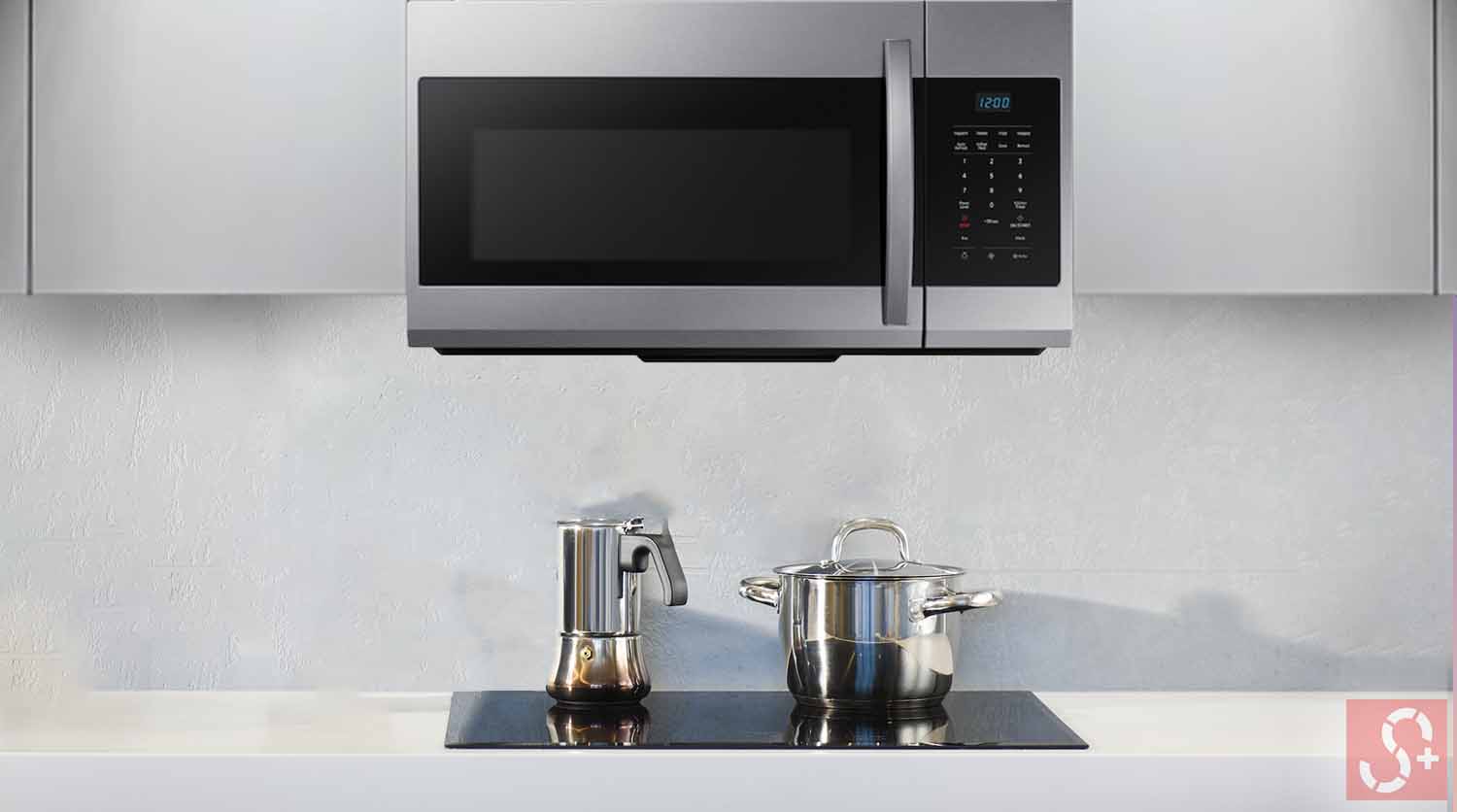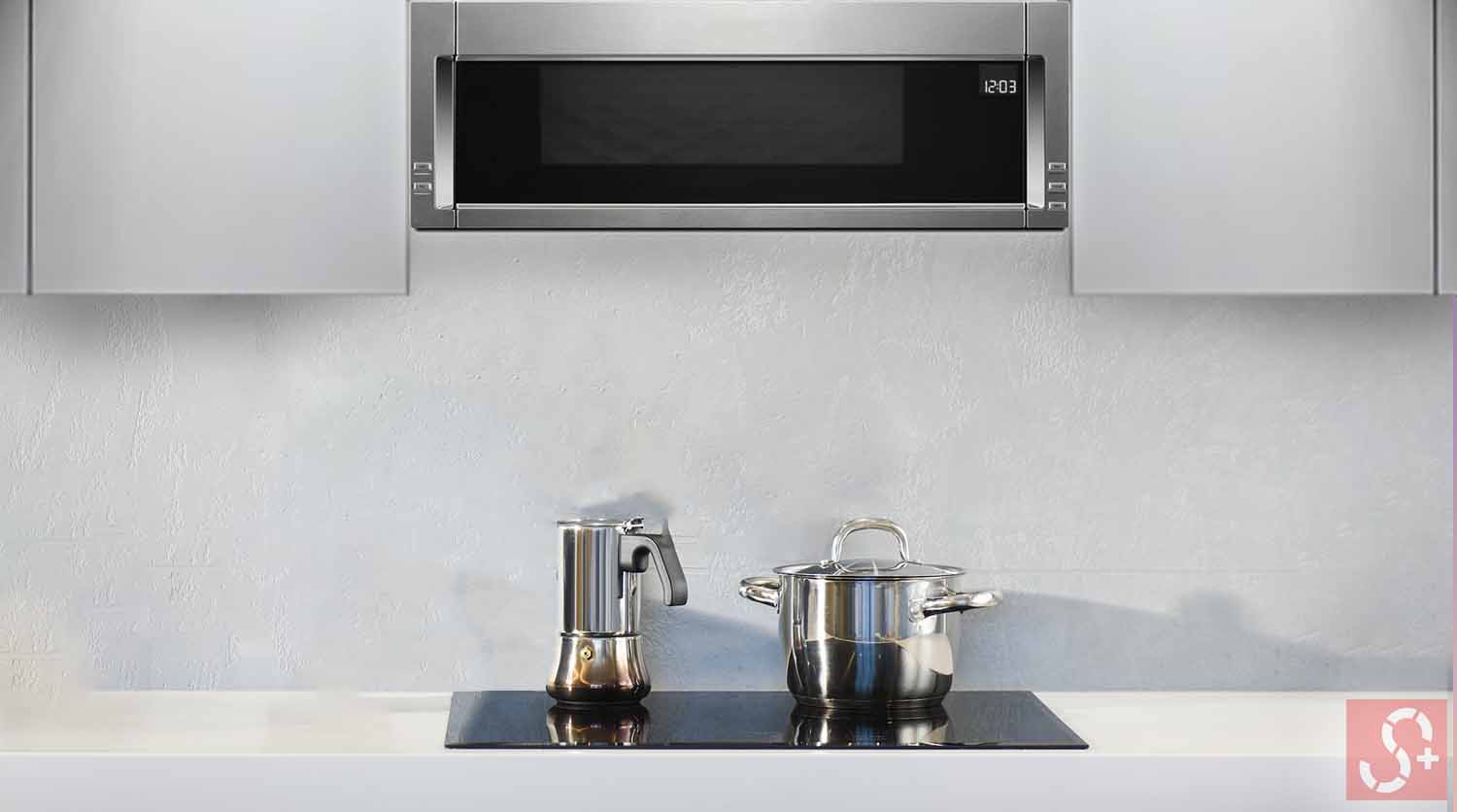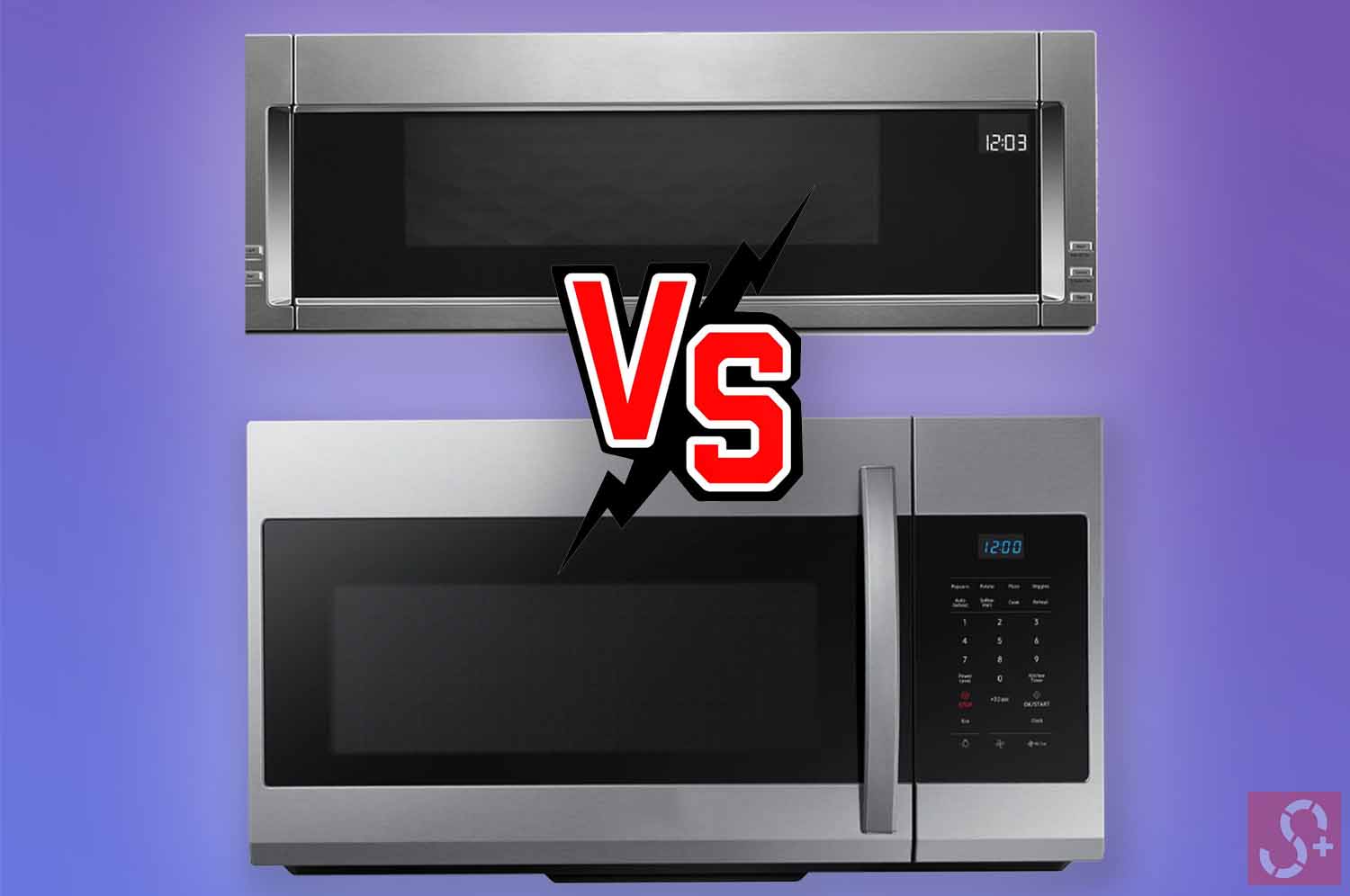One of the newest additions to the microwave product family is a low-profile microwave. But it’s important to understand how low-profile microwaves stack up and compare them with other conventional microwaves as you learn more about them.
Key Takeaways:
The main difference between a low-profile microwave and a regular full-sized microwave is the size. low-profile microwaves are up to 6 1/2″ smaller height-wise. From the top of your range cooktop to the bottom of your low-profile microwave, you will have more overall clearance.
Read on to learn in detail about the difference between low-profile microwaves and regular ones.
Difference Between Low Profile Microwave And Regular Microwave
| Comparison | Low Profile Microwave | Regular Over-The-Range Microwave |
| Height | ~ 10 inches | ~ 17 inches |
| Width | ~ 30 inches | ~ 30 inches |
| Closed Door Depth | ~ 18 inches | ~ 15 – 17 inches |
| Open Door Depth | ~ 48 inches | ~ 40 – 50 inches |
| Interior Space | ~ 1.1 cu. ft. | ~ 0.8 – 2.1 cu. ft. |
| CFM | ~ 400 – 500 | ~ 200 – 400 |
| Cost | ~ $400 – $1000 | ~ $150 – $570 |
Design
Most low-profile microwaves max out a little over 10 inches, so you’ll need a narrower opening in the cabinets over your range to accommodate it. Nevertheless, it’s a great way to make the most of your space.


When installing an over-the-range microwave, it is essential to leave at least 30″ between the top of the stove and the microwave.
However, you can install low-profile microwaves like the Whirlpool 1.1 cu. ft. where a range hood would go, so it needs 24″ of clearance above the range to accommodate it. In other words, you can use this microwave instead of a conventional under-cabinet rangehood.
Interior Space
A low-profile microwave has a capacity of almost 1.1 cubic feet. When compared to a standard over-the-range microwave, it is somewhat lower.
That said, low-profile microwaves can accommodate standard dinner plates and should be enough to hold most glasses and plates.
CFM
CFM is nothing but Cubic Feet per minute, and it is the rating of the fan. It indicates how much air a fan can move.
Most low-profile microwaves typically have higher CFM values ranging from 400 to 500 CFM. On the other hand, regular over-the-range microwaves can have a wide range of CFM values – as low as 200 to as high as 400.
The general rule is the more the CFM value, the more the airflow will be. So with higher CFM values, low-profile microwaves also perform better in the head-to-head comparison.
Cost
In terms of cost, low-profile microwaves are way too expensive compared to regular, over-the-range microwaves. On average, the cost of a low-profile microwave starts from around $400. On the other hand, the cost of an over-the-range microwave starts from only $150.
Do Low Profile Microwaves Stick Out Further?
Generally, low-profile microwaves do stick out further.
But that shouldn’t be a big issue because low-profile microwaves are designed to blend well with the setting.
For instance, let’s take the example of the low-profile whirlpool microwave. These microwaves typically have a depth of 18 inches. And wall cabinets are usually 12 inches deep.
So the low-profile microwave will stick out further. But whirlpool, the manufacturer, has made some design tweaks for the best possible experience.
Since the microwave will slightly stick out, the handle option is omitted in these microwaves. And instead, touch buttons are now in place. This allows the microwave to have a more compact look and design.
The next design tweak is the color. The sides of a low-profile whirlpool microwave are given the same color as that of the front of the microwave. This ensures the microwave doesn’t look odd and blends well in its own design and looks.
Do Low Profile Microwave Vent Outside?
There are two main ventilation systems in microwaves.
- Venting the air outside
- Recirculating the air back inside
As a general rule, you can vent low-profile microwaves outside and inside based on your preference.
Venting Outside:
Most of the steam, heat, odor, and particles created during cooking is vented straight outside using an externally vented microwave, which employs a fan to pull air through the microwave’s vents and into an exhaust duct running to the exterior of the building.
Installing a microwave with a recirculating vent is significantly simpler and less expensive than installing an externally vented microwave, which necessitates the construction of ducting and an outside vent cap, plus the piercing of a wall.
Since an exterior vent must have direct contact with the outside air, this type of vent is typically installed on an outside wall.
A recirculation system, however, needs just to be mounted on an inside wall to begin functioning, and it is also portable.
Recirculating Inside:
A recirculating vent’s benefits in terms of installation simplicity and energy savings come at the expense of proper ventilation.
The air is sucked in, passed through a filter, and released back into the kitchen via a ductless recirculating vent.
While a charcoal filter in certain models can remove smells and some particles from the air, most of the heat and moisture, as well as other sorts of particles, are allowed to remain within the dwelling.
Aluminum filters used in other devices effectively capture grease but do little else.
Please note:
The need for an external venting system for a microwave is not mandatory. It’s not necessary, but some people like it, and it won’t hurt anything if you choose the recirculating option – just ensure that no harmful gasses or smoke are released.
Final Verdict
Over-the-range microwaves remaining above the range serve a dual purpose – as both an oven and a hood.
They give light above the stove and provide proper ventilation and airflow. And low profile microwaves also serve a similar purpose.
Customers whose kitchens were designed to fit a range hood but not a normal over-the-range microwave are the primary target audience for low-profile microwaves.
You will find this a nice alternative if you don’t have enough space above your range for a regular over-the-range type microwave.
But although low-profile microwaves have a leg up against over-the-range microwaves by consuming less space, they come at a higher price. So ultimately, it depends on your budget and specific needs.
Need more help deciding whether low-profile microwaves are for you or not? Check out our complete low-profile microwave buyer’s guide here.








